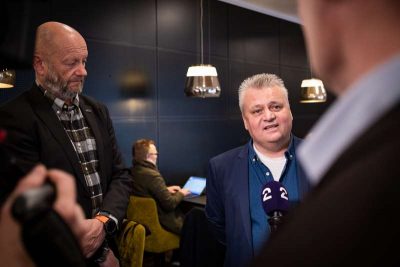Norwegian labour leaders and industrial employers were heaving sighs of relief on Saturday, and probably getting some badly needed sleep. After marathon mediation that ran 23 hours into overtime, they managed to ward off a major strike late Friday night that could have sparked several more.

It’s high season for wage and benefits negotiations in Norway. The settlement reached between the large trade union federation Fellesforbundet and employers’ organization Norsk Industri sets the tone for lots of other labour talks through the spring.
That’s why its so important for all the other upcoming negotiations. Now there’s reason for other labour organizations to expect raises similar to the 3.7 percent pay hikes agreed for tens of thousands of industrial workers.
Nearly 30,000 of them had been poised to walk off their jobs at shipyards, oil supply firms and many other industrial firms around the country. Their top union leader, Fellesforbundet leader Jørn Eggum, claimed that the settlement achieves the main goal of the threatened strike: to strengthen purchasing power at a time of rising prices. “That’s an important victory for Norwegian wage earners,” Eggum said.
Both he and Norsk Industri leader Stein Lier-Hansen could claim victories, though, with Lier-Hansen relieved that a strike was avoided and that various working conditions were “modernized.” He noted that “many topics” were up for negotiation, from wage levels to continuing education for workers. Both sides were also keen not to contribute to any spiraling inflation ahead.
“There will now be further development,” Lier-Hansen said at a late-night press briefing, that will apply “to some of the world’s best industrial workers, and it will take place within a framework that their employers can live with.”
State mediator Mats Ruland played a key role in the marathon talks that had continued well past a midnight deadline on Thursday and right up to midnight Friday. With economists expecting an overall price increase of 3.3 percent in Norway this year, the raise hammered out is meant to boost purchasing power lost last year when prices rose higher than wage settlements.

Ruland thanked both the trade union federation and the employers’ organization for their cooperation. He also thanked the government, which agreed to boost funding for trade schools that can help train workers and keep them updated at a time of rapid technological change. “That was absolutely critical in finding a solution here,” Ruland told reporters.
Media commentators have noted that no one wanted a strike just when worklife is returning to normal after the Corona crisis. The war in Ukraine is also creating great economic uncertainty, causing price hikes because of shortages tied to the war, and making any potential loss of production in Norway more disruptive than ever.
“These are tough times for many,” Eggum said. “That’s why it was so important to secure an adequate wage and benefit settlement.”
Its terms will now set the tone for other looming wage negotiations, even though nurses and teachers are so weary of lagging behind other groups with relatively low pay that they’re gearing up for strikes regardless. The 3.7 percent settlement, however, gives them a good starting point.
newsinenglish.no/Nina Berglund

